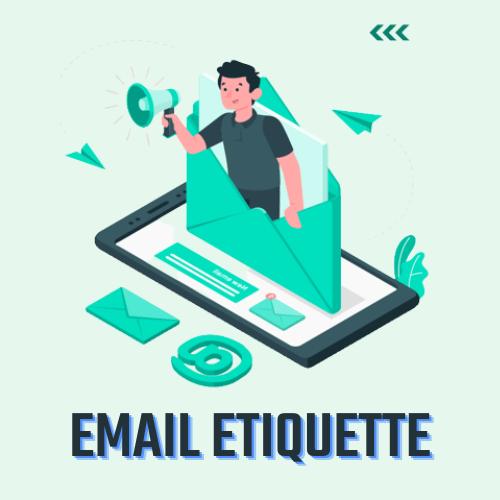The world is evolving. With the increased digitization of companies, emailing has become all the more widespread for employees to stay informed. Learning the art of writing a professional email helps you set a lasting impression of your work etiquettes, including how effectively you communicate. In this article, we discuss more about emails, including how to write a professional email, and share some tips for writing effective emails.
Email has become an essential tool for communication in the corporate world. It is a fast and efficient way to communicate with colleagues, clients, and vendors. However, it is also a medium that requires etiquette to be followed to ensure effective communication and to avoid misunderstandings.
In this article, we will discuss corporate email etiquette and the do’s and don’ts of email communication in a corporate setting.
Do’s of corporate email etiquette:
Use a professional email address:
Your email address should reflect your name and not a personal or informal handle. It is important to have a professional email address that is easy to remember and easy to spell.
Use a clear and concise subject line:
A subject line should be clear and concise, indicating the purpose of the email. A well-written subject line will help the recipient prioritize and organize their inbox.
Interesting Subject Line:
The subject line is a short message that is displayed before the contents of the email are visible in the inbox. It summarizes the intention of your email in usually seven to eight words. Moreover, a subject line helps the recipient to quickly identify your email in their inbox. For example, Minutes from today’s meeting or Update on developments on the XYZ project.
Greet the recipient:
A greeting is an essential part of an email. Start your email with a professional greeting like “Dear Mr./Ms.” or “Hello” followed by the recipient’s name.
Use proper salutations and closings:
Always use a proper salutation and closing to your email, such as “Best regards” or “Sincerely.” This shows respect and professionalism.
Keep it short and to the point:
Keep your email concise and to the point. Avoid lengthy paragraphs and stick to the topic at hand. Use bullet points or numbered lists to make your email more organized and readable.
Use a professional tone:
Emails should be written in a professional tone. Avoid using emoticons, slang, or colloquial language. Use proper grammar and punctuation.
End with a signature
Being the very last section of your email, the signature maintains a sense of neutral authority and professionalism. It usually includes your complete present professional identification by name, job position, company name, contact number and possibly, an alternative email address for you. Ensure that you begin your signature with ‘Sincerely’ or ‘Best regards’.
Proofread before sending:
Always proofread your email before sending it. Check for any spelling or grammatical errors. A poorly written email can create a negative impression on the recipient.
Respond promptly:
Respond to emails promptly, especially if it is urgent or requires a quick response. This shows that you are reliable and responsible.
Don’ts of corporate email etiquette:
While drafting emails please make sure that following mistakes are avoided.
Use all caps:
Using all caps in an email is equivalent to shouting. It is considered rude and can be offensive to the recipient.
Use abbreviations or acronyms:
Avoid using abbreviations or acronyms that the recipient may not understand. Spell out words and avoid using jargon.
Send large attachments:
Sending large attachments can cause the recipient’s inbox to fill up quickly. Use cloud storage services like Google Drive or Dropbox to share large files.
Forward chain emails:
Avoid forwarding chain emails or spam to colleagues. This can be annoying and distracting for the recipient.
Use sarcasm or humor:
Sarcasm and humor can be easily misinterpreted in an email. Stick to a professional tone and avoid using humor or sarcasm.
Send emails when angry or emotional:
Avoid sending emails when angry or emotional. Take time to cool down and compose yourself before responding.
Use email for sensitive topics:
Avoid discussing sensitive topics like personal issues or performance evaluations via email. These topics are better discussed in person.
CC too many people:
Avoid CC-ing too many people in an email. This can be overwhelming for the recipient and can lead to unnecessary emails.
In conclusion, email communication is an essential tool in the corporate world, and following proper email etiquette is crucial. It is important to use a professional tone, keep the email concise and to the point, and avoid using humor or sarcasm. Always proofread your email before sending and respond promptly. By following these simple guidelines, you can ensure effective communication and avoid misunderstandings in the workplace.



